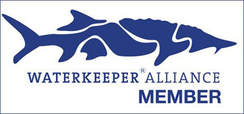|
Operation Shoestring provides year-round academic, social and emotional support to children in central Jackson from pre-K – 12th grade, while supporting and providing resources to their families. This summer, Pearl Riverkeeper is partnering with Operation Shoestring to provide water education for their Project Rise summer camp. From Operation Shoestring: "At our Project Rise summer camp kids like Georgia have empowering, exciting, and enriching experiences that broaden the scope of what she thought was possible in her life. Abby Braman, executive director of Pearl Riverkeeper was the first person Georgia had ever met that worked in environmentalism, and now the Walton Elementary student thinks that maybe she'll grow up to be like her. 'She protects nature, like the turtles. She even holds them! It's so cool,' Georgia reflected when she got to Operation Shoestring. And it's through these experiences that Georgia and her peers build the foundations of a healthy, hopeful, and self-determined life. Partner with us at operationshoestring.org/support" Pearl Riverkeeper was also fortunate this summer to spend time at beautiful Lake Pushmataha chatting with the Choctaw Youth Conservation Corps about environmental non-profits, careers in conservation, the importance of water quality protections and demonstrating water testing procedures. "The Choctaw Youth Conservation Corps is a comprehensive youth program that provides tribal youth work-based opportunities in the field of environmental conservation, natural resources management, and related aspects of the outdoor professional study through a 4-week long summer project that strengthens the protection, conservancy, and maintenance of natural resources on the Choctaw tribal lands, with an emphasis on the preserving cultural significant locations, such as Nanih Waiya. Participants assist with actual natural resources management work tasks, participate daily in hands-on activities in order to build on tribal stewardship and appreciation for our tribal natural resources and participate in educational, cultural and environmental learning taught by tribal, state and federal researchers and professionals." Thank you, Mitzi Reed and CYCC!
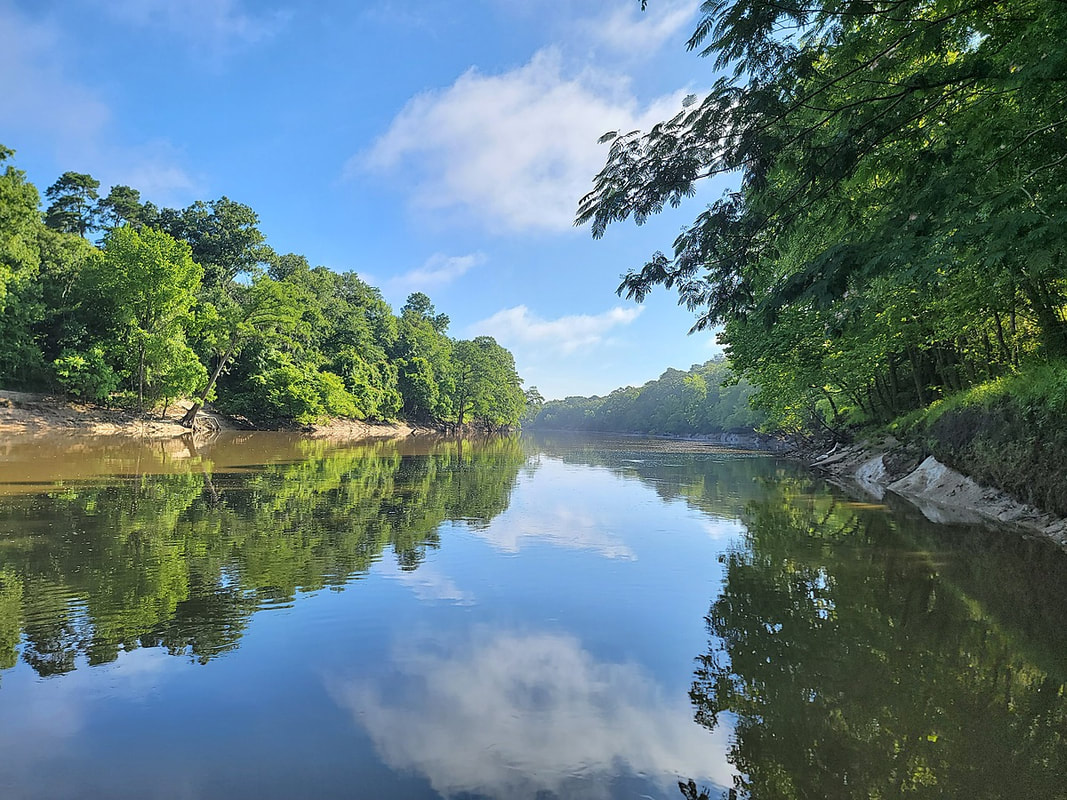 In 2021, Pearl Riverkeeper volunteers conducted over 260 E.coli bacteria tests at 20 Pearl River, Strong River, Bogue Chitto River and Ross Barnett Reservoir locations in order to provide you with information about whether it was safe to recreate!
What is E.coli? In 2021, Pearl Riverkeeper volunteers conducted E.coli testing at these locations:
Results are posted on the Pearl Riverkeeper website, Swim Guide website, Water Rangers website and through text alerts. MS Water Stewards uses the "stoplight system".
Below are pie charts listing the percentages of Pass (E.coli levels within Green or Yellow levels) and Fail (E.coli levels in the Red or "relatively unsafe for human contact") for each location during the 2021 testing year. What's next? Pearl Riverkeeper is continually expanding our citizen science water quality monitoring program. MS Water Stewards will be training another group of Bacteriological and Water Chemistry Monitoring volunteers in April 2022. Water Chemistry and Bacteriological Monitoring at the Jackson area locations will be used to assess impacts to the Pearl River and its urban tributaries from sanitary sewer overflows and leaks. Additional water testing locations on the Strong River and Sellers Creek will be assessed to help determine the source of the high E.coli levels in those locations. Water Chemistry Monitoring volunteers will continue to look for trends in water quality by testing for pH, dissolved oxygen, turbidity, hardness, alkalinity and temperature. HOW CAN YOU GET INVOLVED?
Thank you to all of our volunteers, supporters, MS Water Stewards and our sponsor, Patagonia, for making this year of water testing a huge success!
According to EPA's most recent Toxic Release inventory (TRI) National Analysis, 4.5 million pounds of toxic chemicals were dumped into the Pearl River in 2019. The vast majority of this toxic waste came in the form of nitrates from 3 poultry processing companies, Tyson Foods, Sanderson Farms and Peco Foods. The amount of TRI pollutants entering the Pearl River watershed has increased 47% since Pearl Riverkeeper began tracking the reports in 2015. The Tyson Farms plant in Carthage is ranked #1 for permitted releases to water in all of Mississippi.
Louisiana ranks 4th out of 56 states/territories nationwide based on total releases per square mile (rank 1 = highest releases). Mississippi ranks 12th out of 56. The TRI is easily searchable by state, county, city or zip code: https://www.epa.gov/trinationalanalysis/where-you-live.
Join forces with Pearl Riverkeeper to help protect our watershed by signing up for our newsletter, becoming a member or becoming a Water Steward. 🚨🚨A 5-foot long Gulf sturgeon was detected in the Pearl River near LeFleurs Bluff State Park ABOVE the Jackson Waterworks dam this past spring!! The Gulf sturgeon, originally tagged by Kayla Kimmel and her USFWS Baton Rouge team in 2017, was detected by a tag reader from a Gulf sturgeon telemetry study being conducted by Dr. Michael Andres’ lab from The University of Southern Mississippi funded by the USFWS. The last confirmed Gulf sturgeon sighting in the Jackson area was 1996. The Gulf sturgeon is an anadromous species that lives in saltwater but travels up freshwater rivers to spawn. The 2 lowhead dams on the Pearl River are barriers to their natural migration and spawning patterns. Numerous sturgeon studies are currently being conducted on the Pearl River which will help scientists in their recovery efforts for this gorgeous endangered species. This is such exciting news for the Pearl River and the Gulf sturgeon that the national press picked up the story! Click below to read the story in the Miami Herald. 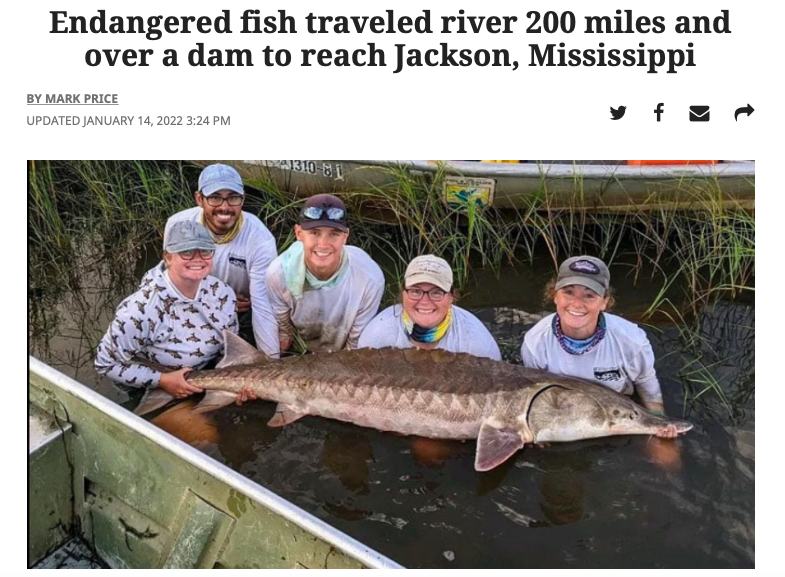 The University of Southern Mississippi graduate students and research technicians hold an adult Gulf sturgeon captured in the Pascagoula River. Pictured from left to right: Elizabeth Greenheck, Alfonso Cohuo, Austin Draper, Kasea Price, and Kati Wright. (Photo credit: Michael Andres, The University of Southern Mississippi) 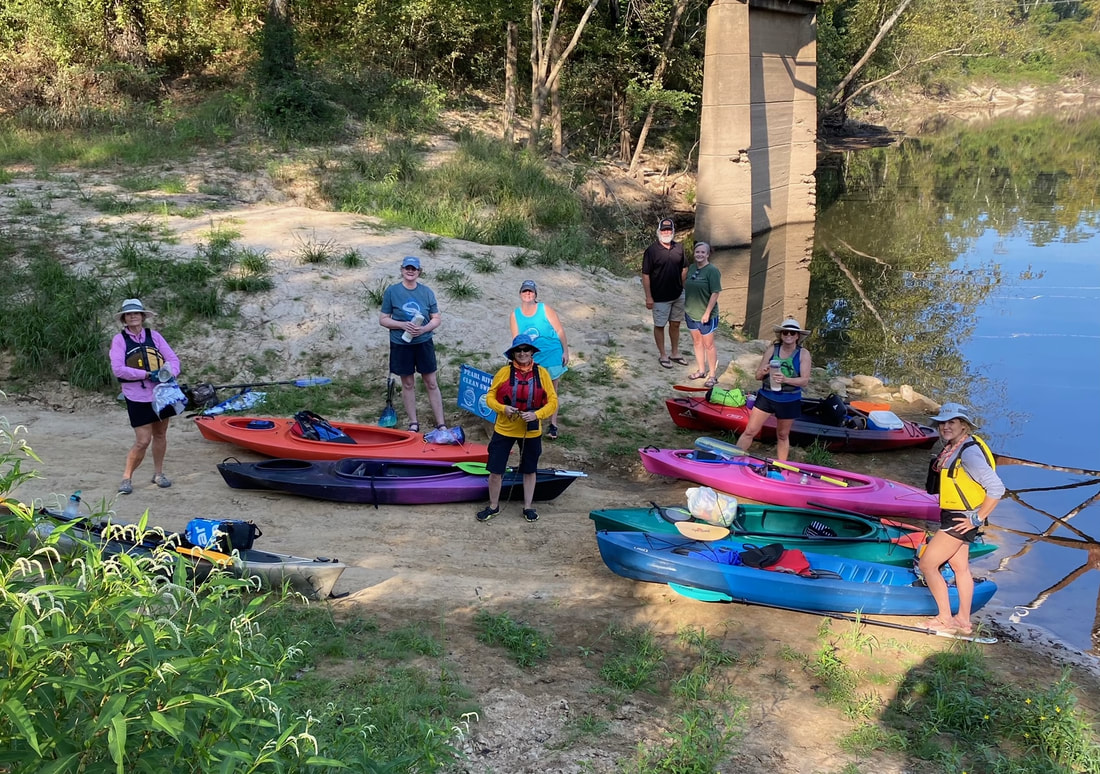 Always exciting to learn of a Gulf sturgeon sighting in the Pearl. This fish was caught in a fisherman's net on the Pearl River near Atwood Water Park, Monticello, MS last week and it was released unharmed. During this time of the year, Gulf sturgeon are migrating from the Gulf of Mexico into coastal rivers where they spawn. In the summer, the sturgeon will spend their time in between their upstream spawning areas and the estuaries on the coast. Gulf sturgeon studies in the Pearl River Several on-going scientific studies of this endangered species are being conducted by USFWS:
If you experience a Gulf sturgeon sighting, please note your exact location/time and date/condition and size of the fish, take a photo and share it with USFWS. Of course, it is illegal to harm or otherwise interfere with an endangered species. By: John Kees, NCU herbarium intern 1. Sedge (Carex spp.) -An important component of natural forest understory and wetland communities. -The federally endangered Mitchell’s satyr (Neonympha mitchelliana) uses Carex as host plants, along with several skipper butterflies. -More-or-less evergreen, most active in the cold-season, and can be used as a groundcover or Liriope alternative. Some species do well as annually mowed lawn substitutes in shade, best paired with shade-tolerant forbs and spring ephemerals e.g. Mississippi river wakerobin (Trillium foetidissimum), Lapham’s wild blue phlox (Phlox divaricata ssp. laphamii), native violet woodsorrel (Oxalis violacea), spring-beauty (Claytonia virginiana), perfoliate bellwort (Uvularia perfoliata). *Recommended species for PR drainage: Carex socialis (Social sedge), Carex joorii (Cypress swamp sedge), Carex cherokeensis (Cherokee sedge) Carex crinita (fringed sedge), Carex abscondita (hidden sedge), Carex glaucescens (pendulous sedge), Carex flaccosperma (blue sedge), Carex blanda (common wood sedge), Carex atlantica spp. capillacea (prickly bog sedge), Carex intumescens (bladder sedge), Carex lurida (sallow sedge), Carex vulpinoidea (Fox sedge), Carex leavenworthii (leavenworth’s sedge), Carex crus-corvi (crowfoot sedge). 2. Bluestem (Andropogon spp./Schizachyrium spp.) -Hosts for many different skipper butterflies (Hesperiidae) and a variety of other insects. -Provides important cover & forage for wildlife during the winter. -Native bunchgrasses can be interseeded with clumps of flowering native forbs to suppress weeds, help support stems, and enhance wildlife habitat. *Recommended species for PR drainage: Schizachyrium scoparium (little bluestem, formerly Andropogon scoparius), Andropogon gerardii (big bluestem), Andropogon ternarius (splitbeard bluestem), Andropogon gyrans (Elliott’s bluestem), Andropogon mohrii (Mohr’s bluestem), Andropogon glomeratus var. glaucopsis (purple bluestem), Andropogon virginicus var. glaucus (white bluestem) *Other great commercially available native grasses: switchgrass (Panicum virgatum), Prairie indiangrass (Sorghastrum nutans), lopsided indiangrass (Sorghastrum secundum), pineywoods dropseed (Sporobolus junceus), prairie three-awn (Aristida purpurascens), southeastern wildrye (Elymus glabriflorus), florida paspalum (Paspalum floridanum), Plicate paspalum (Paspalum plicatulum), purple lovegrass (Eragrostis spectabilis), Elliott’s lovegrass (Eragrostis elliottii), Gamagrass (Tripsacum dactyloides), silky oatgrass (Danthonia sericea), poverty oatgrass (Danthonia spicata), Black needlegrass (Piptochaetium avenaceum), Purpletop (Tridens flavus), Longspike tridens (Tridens strictus), muhlygrass (Muhlenbergia capillaris), silkyscale grass (Anthaenantia rufa). 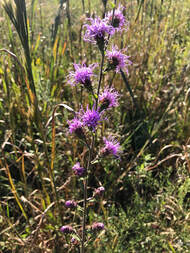 Liatris squarrulosa, Photo: John Kees Liatris squarrulosa, Photo: John Kees 3. Blazing-star (Liatris spp.) -Flowers attract hummingbirds and a wide variety of bees, butterflies and pollinating flies and wasps. -Important nectar source for the monarch butterfly (Danaus plexippus) during fall migration. *Recommended species for PR drainage: Liatris squarrulosa (appalachian blazingstar), Liatris elegans (elegant blazing-star), Liatris pycnostachya var. lasiophylla (louisiana prairie blazingstar), Liatris spicata var. resinosa (southern gayfeather), Liatris squarrosa (scaly blazingstar). 4. Goldenrod (Solidago spp.) -Genus hosts 100+ species of butterflies and moths and a wide variety of other native insects. -Flowers attract bees, butterflies, and pollinating flies, wasps, and beetles. -Pollen source for many pollen specialist bees. *Recommended species for PR drainage: Solidago rugosa (crinkle-leaf goldenrod), Solidago caesia var. zedia (gulf coast bluestem goldenrod), Solidago fistulosa (pineywoods goldenrod), Solidago petiolaris (downy goldenrod), Solidago auriculata (eared goldenrod), Solidago nitida (shining goldenrod), Solidago mexicana (southern seaside goldenrod), Solidago speciosa (showy goldenrod). 5. Native sunflowers (Helianthus spp.) -Host plants for 50+ species of butterflies and moths, including the silvery checkerspot (Chlosyne nycteis). -Flowers attract a variety of bees, butterflies, and pollinating flies, wasps, and beetles. -Pollen source for many native pollen specialist bees. *Recommended species for PR drainage: Helianthus mollis (ashy sunflower), Helianthus atrorubens (darkeye sunflower), Helianthus heterophyllus (variable sunflower), Helianthus resinosus (resindot sunflower), Helianthus simulans (muck sunflower), Helianthus debilis (beach sunflower), Helianthus divaricatus (woodland sunflower), Helianthus microcephalus (smallhead sunflower). 6. American aster (Symphyotrichum spp.) -Very late-blooming, into December for some species. -Host plant for pearl crescent (Phyciodes tharos). -Flowers attract a variety of bees, butterflies, and pollinating flies, wasps, and beetles. Pollen source for many native specialist bees. *Recommended species for PR drainage: Symphyotrichum cordifolium (heartleaf aster), Symphyotrichum patens (patent aster), Symphyotrichum elliottii (Elliott’s aster), Symphyotrichum lateriflorum (calico aster), Symphyotrichum dumosum (bushy aster), Symphyotrichum novae-angliae (New England aster), Symphyotrichum praealtum (willowleaf aster), Symphyotrichum drummondii (Drummond’s heartleaf aster). 7. Ironweed (Vernonia spp.) -Flowers are very attractive to butterflies and long-tongued bees. -Host plant & supports a few pollen specialist bees. *Recommended species for PR drainage: Vernonia angustifolia (narrowleaf ironweed), Vernonia gigantea (giant ironweed), Vernonia texana (Texas ironweed). 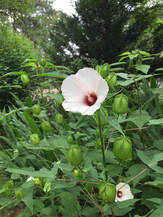 Hibiscus lasiocarpos, Photo: John Kees Hibiscus lasiocarpos, Photo: John Kees 8. Native hibiscus (Hibiscus spp.) -The hibiscus bee (Ptilothrix bombianus) feeds only on native Hibiscus. -Host plant for a variety of beneficial insects, 30+ species of butterflies and moths. -Flowers attract hummingbirds, solitary bees, pollinating flies, wasps, and beetles. *Recommended species for PR drainage: Hibiscus aculeatus (pineland hibiscus), Hibiscus coccineus (scarlet rosemallow), Hibiscus lasiocarpos (woolly rose-mallow), Hibiscus laevis (halberd-leaved hibiscus). 9. Wild-indigo (Baptisia spp.) -Host for a few species of moths and flowers attract a variety of pollinators. *Recommended species for PR drainage: Baptisia nuttalliana (nuttall’s wild-indigo), Baptisia alba (white wild-indigo), Baptisia leucophaea (cream wild-indigo), Baptisia sphaerocarpa (yellow wild-indigo). 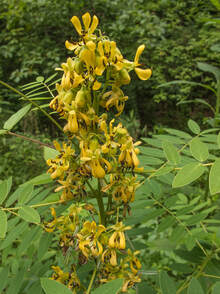 Senna marilandica, Photo: wildflower.org, Stephanie Brundage Senna marilandica, Photo: wildflower.org, Stephanie Brundage 10. Maryland wild-senna (Senna marilandica) -A preferred host plant for cloudless sulphur (Phoebis sennae) and several butterflies in the genus Eurema, less aggressive than partridge pea (Chamaecrista fasciculata). 11. Native sage (Salvia spp.) -High-value nectar plants for solitary bees, butterflies, and hummingbirds. *Recommended species for PR drainage: Salvia azurea ssp. azurea (giant blue sage), Salvia lyrata (lyreleaf sage), Salvia coccinea (scarlet sage). 12. Native verbena (Verbena spp./Glandularia spp.) -Flowers attract long-tongued bees, butterflies, hummingbirds, and other pollinators. -Good alternative to Lantana (Lantana x strigocamara), stiff vervain (Verbena rigida), and Brazilian vervain (Verbena brasiliensis), invasive species in the same family often promoted for pollinator gardens. *Recommended species for PR drainage: Glandularia canadensis (rose vervain, formerly Verbena canadensis), Verbena xutha (gulf vervain), Verbena halei (Texas vervain), Verbena carnea (Carolina vervain). 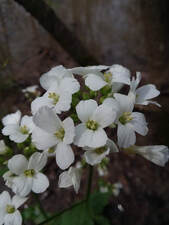 Cardamine bulbosa, Photo: Will McFarland Cardamine bulbosa, Photo: Will McFarland 13. Spring cress (Cardamine bulbosa) -Early spring flowers attract a variety of pollinators. -Host for the cabbage white butterfly (Pieris rapae) and falcate orangetip (Anthocharis midea). 14. Penstemon (Penstemon spp.) -Foxglove-like blooms attract hummingbirds, long-tongued bees, and butterflies; a few species are also reported to use Penstemon as a host plant. *Recommended species for PR drainage: Gulf coast beardtongue (Penstemon tenuis), loose-flowered beardtongue (Penstemon laxiflorus), Foxglove beardtongue (Penstemon digitalis). 15. Milkweed (Asclepias spp.)* -Only host plants for the Monarch butterfly (Danaus plexippus); flowers visited by a variety of pollinators. -Avoid nonnative Tropical milkweed (Asclepias curassavica), which supports high concentrations of OE (Ophryocystis elektrosc irrha) a parasite that kills monarchs, and has evergreen foliage which can attract the overwintering generation of monarchs to breed instead of flying to overwintering sites in Mexico. Recommended species for PR drainage: Asclepias viridis (Green antelopehorns), Asclepias tuberosa (butterfly milkweed), Asclepias perennis (white swamp milkweed), Asclepias verticillata (Whorled milkweed), Asclepias variegata (red-ring milkweed), Asclepias hirtella (tall green milkweed), Asclepias lanceolata (few-flower milkweed), Asclepias humistrata (sandhill milkweed), Asclepias obovata (pineland milkweed), Asclepias michauxii (Michaux’s milkweed), Asclepias longifolia (longleaf milkweed), Asclepias rubra (purple savannah milkweed). 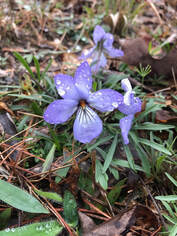 Viola pedata, Photo: John Kees Viola pedata, Photo: John Kees 16. Violet (Viola spp.) -Host plant for fritillary butterflies in the genus Speyeria. -Important early spring nectar plant for bees, preferred by some specialist bees. *Recommended species in PR drainage: Viola walteri (Walter’s violet), Viola pedata (birdsfoot violet), Viola septemloba (coastal plain violet), Viola palmata (wood violet), Viola primulifolia (primrose-leaved violet), Viola sagittata (arrowleaf violet). 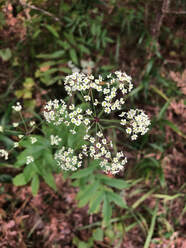 Oxypolis rigidior, Photo: John Kees Oxypolis rigidior, Photo: John Kees 17. Cowbane (Oxypolis spp.) or bishopweed (Ptilimnium spp.) (native black swallowtail hosts) -Host plants for Eastern black swallowtail (Papilio polyxenes). -Flowers attract a variety of pollinators. *Recommended species for PR drainage: Oxypolis rigidior (pig-potato), Oxypolis filiformis (water-cowbane), Ptilimnium capillaceum (eastern bishopweed), Ptilimnium nuttallii (laceflower). 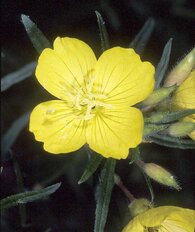 Oenothera fruticosa ©Robert Mohlenbrock Oenothera fruticosa ©Robert Mohlenbrock 18. Bee-blossoms (Oenothera spp.) -Host plant for white-lined sphinx moth (Hyles lineata), also primrose moth (Schinia florida) and several other specialists. -Supports several specialist bees. -Oenothera biennis has night-opening flowers pollinated primarily by sphinx moths. *Recommended species for PR drainage: Oenothera lindheimeri (Lindheimer’s beeblossoms), Oenothera fruticosa (sundrops), Oenothera biennis (biennial evening-primrose). 19. Hoarypea (Tephrosia spp.)* -Host plant for several oligophagous skipper butterflies (Hesperiidae). -Attracts butterflies, hummingbirds, and long-tongued bees. *Recommended species for PR drainage: Tephrosia onobrychoides (multibloom tephrosia), Tephrosia virginiana (goat’s-rue), Tephrosia spicata (spiked hoarypea). 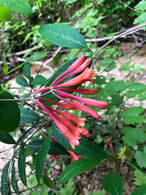 Lonicera sempervirens, Photo: John Kees Lonicera sempervirens, Photo: John Kees 20. Coral honeysuckle (Lonicera sempervirens) -Host for snowberry clearing (Hemaris diffinis) and hummingbird clearwing (Hemaris thysbe). -Flowers are a favorite of hummingbirds. 21. Woolly dutchman’s-pipe (Aristolochia tomentosa) -Host plant for pipevine swallowtail (Battus philenor). 22. Native clematis (Clematis spp.) -High value to solitary bees, also attracts pollinating wasps and flies. *Recommended species for PR drainage: Clematis crispa (marsh leatherflower), Clematis reticulata (net-veined leatherflower), Clematis virginiana (virgin’s-bower), Clematis catesbyana (Catesby’s virgin’s-bower) 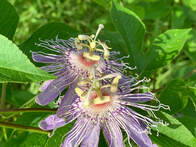 Passiflora incarnata, Photo: Nate Venarske Passiflora incarnata, Photo: Nate Venarske 23. Purple passionflower (Passiflora incarnata) -Preferred host plant for gulf fritillary (Agraulis vanillae). -Flowers attract a variety of pollinators.  Cephalanthus occidentalis, Photo: wildflower.org, Stefan Bloodworth Cephalanthus occidentalis, Photo: wildflower.org, Stefan Bloodworth 24. Buttonbush (Cephalanthus occidentalis) -Not a particularly significant host plant, but the flowers attract very large volumes of pollinators, especially butterflies. 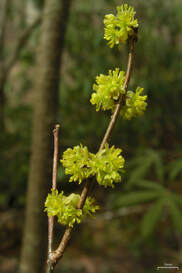 Lindera benzoin, Photo: Jason Hollinger (https://creativecommons.org/licenses/by/2.0) Lindera benzoin, Photo: Jason Hollinger (https://creativecommons.org/licenses/by/2.0) 25. Spicebush (Lindera benzoin) -Host plant for Mississippi’s state butterfly, the Spicebush swallowtail (Papilio troilus). -Very early spring blooms are pollinated mostly by solitary bees and flies. 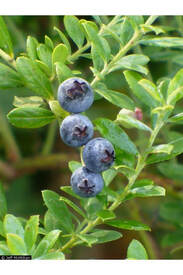 Vaccinium darrowii ©Jeff McMillan Vaccinium darrowii ©Jeff McMillan 26. Wild blueberry (Vaccinium spp.) -Host plant for a wide variety of beneficial insects--collectively (for the genus) several hundred species of butterflies and moths. -Preferred by many specialist bees. -Edible (especially V. formosum and V. virgatum). *Recommended species for PR drainage: Vaccinium stamineum (deerberry), Vaccinium darrowii (Darrow’s evergreen blueberry), Vaccinium elliottii (Elliott’s blueberry), Vaccinium formosum (southern highbush blueberry), Vaccinium virgatum (rabbiteye blueberry) 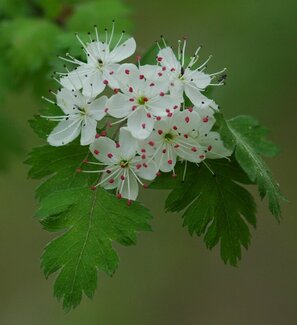 Crataegus marshallii ©Larry Allain Crataegus marshallii ©Larry Allain 27. Native hawthorn (Crataegus spp.). -Important host plant for a wide variety of beneficial insects, including the red-spotted purple (Limenitis anthemis) and Eastern tiger swallowtail (Papilio glaucus). -Fruits are eaten by migratory birds. -Spring blooms are attractive to native bees. *Recommended species for PR drainage: Crataegus opaca (western mayhaw), Crataegus pulcherrima (beautiful hawthorn), Crataegus marshallii (parsley hawthorn), Crataegus uniflora (one-flowered hawthorn), Crataegus ashei (Ashe’s hawthorn), Crataegus triflora (three-flowered hawthorn), Crataegus brachyacantha (blueberry hawthorn). 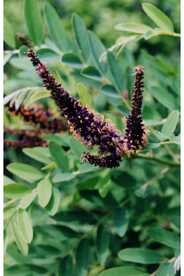 Amorpha fruticosa, Photo: https://plants.sc.egov.usda.gov, Jennifer Anderson Amorpha fruticosa, Photo: https://plants.sc.egov.usda.gov, Jennifer Anderson 28. Tall indigo-bush (Amorpha fruticosa) -Host plant for the southern Dogface (Zerene cesonia), several skippers, and other beneficial insects. -Flowers are mostly pollinated by native solitary bees. 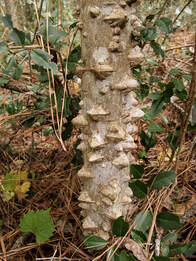 Zanthoxylum clava-herculis, Photo: wildflower.org, Stephanie Brundage Zanthoxylum clava-herculis, Photo: wildflower.org, Stephanie Brundage 29. Hercules’ club (Zanthoxylum clava-herculis) -Host plant for giant swallowtail (Papilio cresphontes). -Attractive to a range of small pollinators, especially pollinating flies and solitary bees. 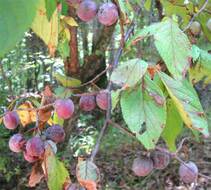 30. Wild plum (Prunus spp.) -Early spring blooms are attractive to native bees. -Edible -Genus hosts many butterflies and moths, including the red-spotted purple (Limenitis anthemis), tiger swallowtail (Papilio glaucus), and several sphinx moths and Saturniid moths . *Recommended species for PR drainage: Prunus mexicana (Mexican plum), Prunus umbellata (flatwoods plum). 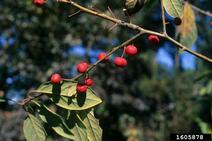 Ilex amelanchier, Photo: John Ruter Ilex amelanchier, Photo: John Ruter 31. Holly (Ilex spp.) -Blooms support several specialist bees. -Berries are important for migratory birds. -Avoid yaupon (Ilex vomitoria) and other evergreen species which have taken over grasslands in south MS and are often considered "native invasives". *Recommended species for PR drainage: Ilex amelanchier (Sarvis holly), Ilex ambigua (Carolina holly), Ilex verticillata (winterberry holly), Ilex decidua (Deciduous holly), Ilex longipes (Georgia holly) 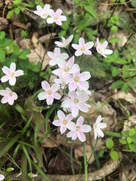 Claytonia virginica, Photo: John Kees Claytonia virginica, Photo: John Kees 32. Spring-beauty (Claytonia virginiana) -Only source of pollen for the specialist bee Andrena erigeniae; major early spring nectar source for many pollinators. -Active in very early spring and can tolerate frequent mowing when not in bloom. -Great transition away from lawn, along with other low-growing early spring bloomers like Ranunculus fascicularis (early buttercup), Anemone caroliniana (prairie anemone), Sisyrinchium spp. (blue-eyed-grass), and Drosera brevifolia (dwarf sundew). General considerations: -Join your native plant society! -Most solitary bees are ground-nesting and need patches of bare soil or sand that aren’t regularly trampled to reproduce. -Cutting back dead stems and blowering leaves in the winter removes overwintering habitat for wildlife. Instead, cut back dead stems in the early spring and leave leaves in place or gently rake them into beds to use as natural mulch (spring ephemerals and forest understory shrubs love hardwood leaf litter!). -Help control invasive species. Invasive plants harm wildlife by escaping from cultivation (via seed and other propagules, often wildlife-dispersed) and disrupting or even completely replacing native plant communities. Removing invasive plants and filling the gaps with native plants is a good way to start introducing natives to your yard. -Only a tiny fraction of exotic (non-native) plants become invasive, but all exotic plants can be harmful when planted over large areas, especially in monocultures. Food chains are powered by native insects which exotic plants cannot support. Conversion of native vegetation to agriculture, tree plantations, landscaping and lawn threatens all native wildlife. -Runoff from lawns pollutes waterways and harms wildlife; lawns are also a major source of greenhouse gases and airborne pollutants. Lawn removal should be a focus of native plantings. Native "meadow" plantings using grassland plants (sun) and “sedge lawns” (shade) are much lower-maintenance alternatives. Native wetland buffers and rain gardens can help filter runoff and control erosion. Species selection: -Greater diversity of native plants = greater diversity of wildlife. Native insects tend to specialize on a few species or genera of native plants. -Ecoregions, not zones! As native plantings develop, the goal, overall, should be to mimic the plant communities which naturally occurred in the area. Species that occur within the same ecoregion as the planting in similar habitat (consider soil, moisture, slope, shade) will benefit wildlife the most and be easiest to maintain. -Most MS and LA uplands were historically prairie, savannah, or open woodland, maintained by frequent surface fires--not forest! These “treed grasslands” are incredibly diverse, but nearly all of the diversity is in the herbaceous understory (grasses and wildflowers), with a handful of scrubby, fire-adapted shrubs. Grassland plants are critical for pollinators in the southeast and should be the focus in sunny or semi-sunny locations. -“Powerhouse” plants are great to start with, but the high numbers of insects hosted can be misleading. Insects can require different plants and different habitats at different life stages and many “powerhouse” plants are generalists which have expanded their ranges in recent years (e.g. mesophytic oaks). Establishment & maintenance: -Native plants don’t need soil amendments or fertilizers! Not all native plants grow in all soil types, but all soil types have native plants adapted to them. -Mississippi native plants evolved under conditions of intense competition. They're most effective when allowed to intermingle with other species that occur in the same habitat, not grown as individual specimens in manicured, mulched landscaping beds. -Weeds can be a problem early on, but native perennials are strong competitors and will eventually push out annual and biennial weeds. -Growing native plants from seed is cheap, but good site prep is essential--avoid soil disturbance, use a non-persistent herbicide like glyphosate. Grassland plants develop extensive root systems so they will not flower for the first 2-3 years (“first year they sleep, second year they creep, third year they leap”). Sources that sell native seed and do native grassland restoration can provide more detailed info. -Native grassland plants are adapted to frequent fire and will benefit from spring burns every 1-3 years once established to control weeds and stimulate growth and reproduction. Some will only bloom and fruit reliably if burned or mowed periodically, and most native perennials will put out a flush of new growth post-burn. Mowing and raking is a helpful alternative for urban areas where burning is prohibited. Shopping for native plants: -Scientific names are the best way to get accurate info. Copy and paste! -Use local genetic material whenever possible (plants sourced within the same ecoregion, or, even better, the same or a nearby county). Local ecotypes are best for wildlife and will be easiest to maintain over time. Cross-contact with non-local plants and cultivars can have negative genetic effects on local, native populations. -Cultivars (horticultural selections) of native plants (“nativars”) should be avoided. Denoted with single quotes. E.g. Iris ‘Ann chowning’ or Stokes’ aster ‘Peachie’s pick’. In extreme cases they may be completely unusable to wildlife the local ecotype supports. -Always check to make sure a plant is actually native before purchasing it. Nurseries can be deceptive. Useful Resources:
-Mississippi Native Plant Society (join at https://www.mississippinativeplantsociety.org/) and Facebook group (https://www.facebook.com/groups/1947279902251372/) -Louisiana Native Plant Society (https://www.lnps.org/); chapters--Folsom native plant society (http://folsomnps.org/), Capital area native plant society (http://canps.weebly.com/), Native plant initiative of greater New Orleans (https://www.npi-gno.org/); Facebook discussion groups: https://www.facebook.com/groups/1054570457994403 https://www.facebook.com/groups/1583694195234726/, https://www.facebook.com/groups/npigno. -High-quality images and species profiles: https://warcapps.usgs.gov/PlantID/, https://www.wildflower.org/, http://www.southeasternflora.com/index.php. -iNaturalist (https://www.inaturalist.org/home). For documenting wild plants (native or exotic, cultivated plants will be marked as Casual grade). iNat is regularly used in research and already helping clarify species distributions and locate new populations of both rare native species and recently introduced species. The iNat community is full of experts who can help ID plants. -Searchable list of nonnative invasive plants https://www.invasive.org/weeds.cfm -Weakley’s flora (2020): https://ncbg.unc.edu/research/unc-herbarium/flora-request/. The definitive resource for plant ID in the southeast, with a comprehensive dichotomous key covering the entire region (>10,000 species). Species entries include info (often more up-to-date) found in all of the following sources. Has an index of common names, complete synonymies & basic habitat info for each species. -BONAP is the best source for county distribution maps (see color key): (http://bonap.net/NAPA/Genus/Traditional/County). -EPA level III and IV ecoregions: (https://www.epa.gov/eco-research/ecoregion-download-files-state-region-4#pane-22). -https://www.itis.gov/. Useful when horticultural sources use outdated scientific names. Type in any scientific name and it will come up with the currently accepted name and all synonyms.
According to EPA's most recent Toxic Release inventory (TRI) National Analysis, over 4 million pounds of toxic chemicals were dumped into the Pearl River in 2018. The vast majority of this toxic waste came in the form of nitrates from 3 poultry processing companies, Tyson Foods, Sanderson Farms and Peco Foods.
Nitrate pollution has numerous "external costs" to the environment which are not paid for by the companies discharging this toxic waste. These external costs, borne by the taxpayer and the public in general, include:
In addition to the nitrate compounds dumped by the poultry processing industry, Georgia-Pacific and International Paper together contributed 372,500 pounds of toxic discharges to our watershed, including manganese compounds, methanol, nitrate compounds, ammonia, barium compounds and zinc. In addition to discharges to water, Georgia-Pacific paper mill in Monticello, MS also released 1.4 million pounds of toxic chemicals to the air, including the carcinogenic chemical acetaldehyde. International Paper in Bogalusa, LA released 2.3 million pounds of toxic chemicals to the air. This Pearl River Basin chemical discharge data was compiled from the EPA's 2018 Toxic Release Inventory (TRI) National Analysis Report of chemical discharges to air, land and water. "The TRI tracks the management of certain toxic chemicals that may pose a threat to human health and the environment. Certain industrial facilities in the US must report annually how much of each chemical is recycled, combusted for energy recovery, treated for destruction, and disposed of or otherwise released on- and off-site." The discharge of these chemicals is legally authorized by each state through the National Pollution Discharge Elimination System. Mississippi and Louisiana Departments of Environmental Quality test their waterways, designate the waterway sections as "attaining their designated use" or as "impaired" and make Total Maximum Daily Load (TMDL) discharge determinations. The TMDL is then used as the basis for discharge permit authorizations.
"Since the creation of the TRI Program, the information collected and presented has provided a way for citizens to better understand possible sources of pollution in their communities. This better understanding can be the basis for actions, such as communications with facilities releasing chemicals to the environment and with regulatory authorities that have oversight responsibilities. This concept of citizen empowerment is summed up by the slogan, 'A Right to Know, A Basis to Act'." EPA.gov. Louisiana ranks 4th out of 56 states/territories nationwide based on total releases per square mile (rank 1 = highest releases). Mississippi ranks 13th out of 56. The TRI is easily searchable by state, county, city or zip code: https://www.epa.gov/trinationalanalysis/where-you-live. Join forces with Pearl Riverkeeper to help protect our watershed by signing up for our newsletter, becoming a member or volunteering for our Clean Water Team. Pearl Riverkeeper conducted an analysis on the 2018 Toxic Release Inventory National Analysis Report database published by the EPA. Errors are possible. Please consult the EPA website for the full report. 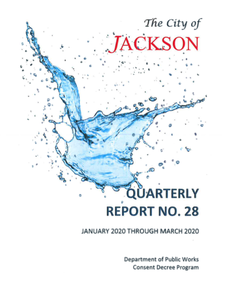
476,541,680 gallons of raw sewage leaked directly to the Pearl River from one location at 408 Jefferson St, Jackson during the heavy rain and flood events of the first 3 months of 2020. The largest single-day discharge occurred on January 11 when 6,831,520 gallons of raw sewage flowed from the Jefferson St manhole to the Pearl and then downriver. This is enough raw sewage released in ONE DAY to fill 10 Olympic swimming pools.
During the same quarter of Jan-Mar 2020, 36 additional Sanitary Sewer Overflow (SSO) discharges to "Waters of the State" occurred and prohibited bypasses at the Savanna Street Wastewater Treatment Plant (WWTP) released 5.7 billion gallons of minimally treated sewage to the Pearl.
Is public notification required during a Sanitary Sewer Overflow (SSO) event?
THE COMMUNITY HAS A RIGHT TO KNOW WHEN MILLIONS OF GALLONS OF RAW SEWAGE ARE BEING RELEASED TO WATERS OF THE STATE AND TO THEIR NEIGHBORHOODS.
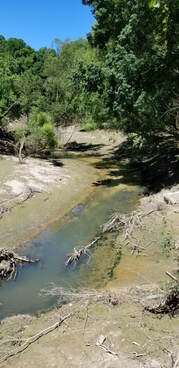
What is a a Sanitary Sewer Overflow?
A Sanitary Sewer Overflow (SSO) is an event in which untreated sewage is discharged from the sewage collection system into the environment prior to reaching the sewage treatment facilities. These discharges endanger human health, cause property damage, and degrade our local water quality.
What causes SSO events? The SSO events experienced by the City of Jackson collection system were caused by excessive flow, collapsed pipes, grease/fat buildup, and blockages from roots and solids. According to the Jan-Mar 2020 Quarterly Report, "The Jackson area received 29.74" of rainfall, or 105% above normal during the reporting period. Also during January and February 2020, the Pearl River was at or above flood action stage of 24 feet for 44 days. It should also be noted that the Pearl River reached a peak level of 36.67 feet on February 17, 2020, which is the third highest historical peak ever recorded. During this period, the system experienced a dramatic increase in inflow. Aerial inspection by the Mississippi Department of Emergency Management and the City of Jackson noted several damaged manholes that allowed floodwaters to enter the collection system." EPA Consent Decree In November 2012, the Jackson City Council entered into a consent decree with the EPA and MDEQ regarding operations at the Savanna Street Wastewater Treatment Plant. The consent decree required the City to pay a civil penalty of $437,916, execute a $875,000 environmental project, and overhaul its wastewater treatment plant and collection systems. The City was given 18 years to fully comply, with the vast majority of the work to be completed within the next 11 years (by 2023). The City of Jackson was required to develop prioritization work plans, rehabilitation plans, preventative maintenance programs and supplemental environmental program timelines. The City is required to submit quarterly, semi-annual and annual reports to the EPA and must publish these on their website. Recent Yearly Sewage Overflow Totals 2018:
Where have the City of Jackson 2020 SSO events to Waters of the State occurred?
Check out our interactive map below to find out if a SSO event that released sewage to Waters of the State occurred in your City of Jackson neighborhood. Click on the pinned locations for information about the date, location, cause of the overflow, and amount of untreated sewage released. Large Scale Map Link THE BACKSTORY The Rankin-Hinds Pearl River Flood and Drainage Control District (Levee Board) was established in response to a 1961 flood and Congressional-authorization for a Rankin and Hinds county federal flood control project. In 1964, the US Army Corps of Engineers (USACE) began construction on a 1.5 mile levee on the Jackson side of the river, a 10.3 mile levee on the Rankin side, along with 5 miles of river straightening and channelization.
THE JACKSON FLOOD OF 1979 Less than a decade later, in April 1979, the City of Jackson and surrounding counties were hit with the flood of record, devastating communities and causing an estimated $500-$700 million in damages. Thousands of homes and businesses in the Jackson area were inundated in the flood stage that lasted from 10 to 14 days in some areas. Again, Congress gave authorization for the USACE to develop a comprehensive flood control plan for the Jackson metropolitan area. Now, 41 years after the flood of record, there is still no flood mitigation for the Jackson metro area. What happened? DEVELOPMENT AS FLOOD CONTROL Following the 1979 flood, numerous Pearl River flood control plans are developed by the USACE. In 1996, the USACE Feasibility Report, Flood Control, Pearl River Basin, Jackson Metropolitan Area, Mississippi recommends a system of flood walls and levees for flood control called the Comprehensive Levee Plan. This plan is ready for implementation and construction in 1996 but does not satisfy the development desires of the Levee Board and local developers. 17 years after the 1979 flood, the Levee Board rejects a feasible flood control plan.
Does the Levee Board give up on their development as flood control projects after that? Of course not.
Does the Levee Board give up on their development as flood control project then? Of course not.
In 2007, 28 years after the 1979 flood, the Levee Board again rejects the Comprehensive Levee Plan which has USACE approval and also Congressionally-authorized federal expenditure.
ENTER THE ONE LAKE PROJECT
PAVE PARADISE AND PUT UP A PARKING LOT Continued construction in the flood plain since the 1983 flood, the 2nd highest flood on record, made predicting flood stage impacts for the most recent Feb 2020 flood more difficult. During this high water event, the 3rd highest flood on record, Mike Word, Rankin County Emergency Management Director, stated that, because of development in the decades since the last major flood, "nobody can tell you where the 38-foot mark goes" and how widespread the flooding will be. He said that the amount of concrete and asphalt and sedimentation built up in the basin area over years will prevent water from soaking into the ground and could exacerbate flooding. "Nobody knows for sure how much the basin will hold." (Clarion Ledger, Feb 15, 2020). Governor Reeves commented at a MEMA press conference on Feb 16, "There were areas, due in large part to construction since 1983, there were areas that were receiving water that we anticipated would not receive water until they were at 38' level. All of these projections are just projections because, when you think about the amount of construction that's happened, particularly in the Jackson area since 1983, what we find is that there are certain areas where 36' feels like 38' and maybe there are going to be some areas where 38' feels like 39 or 39.5." Channel 12 Meteorologist, Jacob Lanier, reported that the Feb 2020 flood impacts differed from the forecasts because, " the flood projection maps we used are almost entirely based on the 1983 flood. Over the past 40 years, Rankin County has vastly changed. Going from mostly farm land to a very urbanized area along Lakeland & Old Fannin. This development, with concrete and landscaping, has made it harder for water to pass through. So it acted as a dam of sorts, pushing flood water up the path of least resistance into Northeast Jackson & Hanging Moss Creek. This turned a 36.7 ft river into a 38 ft river for those neighborhoods." "FLOOD CONTROL" HUBRIS In an Engineering News-Record article from Feb 2020, Keith Turner, Levee Board attorney, is quoted, "The approach (One Lake) would also widen the river and make way for commercial development." Sound familiar? The hubris that their "flood control" project would work and would thus enable us to continue to build more structures in the flood zone. We've learned nothing since 1961, when a false sense of security created by a "flood control" solution, led to a massive encroachment on the Pearl River flood plain. Jackson does not need a flood plain development project. The Jackson-metro area needs levee improvements, levee setbacks to remove the metro-area bottleneck and allow for an expanded flood plain, local green infrastructure projects to control flash flooding combined with local adoption and enforcement of appropriate restrictions on further floodplain development and select buyouts of properties that continually flood. As we wait for the Levee Board to push through another misguided Lake plan, construction in Hinds and Rankin county flood zones continues, putting more people and structures at risk for the next high water event.
 This summer, Pearl Riverkeeper volunteers conducted weekly E.coli testing at 17 Pearl River, Strong River and Ross Barnett Reservoir locations in order to provide you with information about whether it was safe to recreate! Expanding from 4 locations in 2018 to 17+ locations in 2019 would not have been possible without our amazing Water Rangers certified volunteer water monitors. Our volunteers are trained in the Quality Assurance protocols developed by Alabama Water Watch and certified by EPA Region 4. Neither the MS Department of Environmental Quality nor the MS Department of Public Health conducts this type of weekly E.coli testing on our freshwater rivers and reservoirs. We think that's a shame, so our volunteers spent Wednesdays in the summer testing your favorite Pearl River watershed locations to keep you informed! What is E.coli? Pearl Riverkeeper volunteers conducted 195 E.coli tests during 13 weeks in June through August at:
About our results: Heavy rains, particularly runoff from Hurricane Barry in July, had significant impact on local water quality. A rain event within 24 hours of testing often resulted in a "high E.coli" reading. Experts recommend that people use extra caution for several days after rainstorms as sewer overflows, failing septic and stormwater runoff can contain high levels of bacteria. What's next? Pearl Riverkeeper is continually expanding our citizen science water quality monitoring program. We will be training another group of Bacteriological Monitoring volunteers in Spring 2020. During the off season, Pearl Riverkeeper volunteers will be conducting monthly Bacteriological testing at current locations and at additional locations in the Jackson area. Bacteriological Monitoring at the Jackson area locations will be used to assess impacts to the Pearl River and its urban tributaries from sanitary sewer overflows and leaks. In addition to Bacteriological Monitoring, volunteers are also conducting Water Chemistry Monitoring which involves testing pH, dissolved oxygen, turbidity, hardness, alkalinity and temperature. The state of Mississippi has over 26,000 miles of perennial streams and rivers. For the state's 2016 Water Quality Assessment, MDEQ assessed only 11% of our waterways and stated that the status of water quality on the remaining 89% (23,568 miles) is unknown. Citizen science from our certified water quality monitors can help fill in the gaps and provide early detection of water quality issues in areas not actively monitored. HOW CAN YOU GET INVOLVED?
Thank you to all of our volunteers, supporters, Swim Guide, MDEQ and Global Water Watch for making this year of Swim Guide a huge success!
|
AuthorPearl Riverkeeper is a licensed member of the Waterkeeper Alliance, the largest and fastest growing nonprofit solely focused on clean water. Archives
September 2023
Categories |
|
Ready to support our work for Clean Water and Healthy Rivers?
|
|

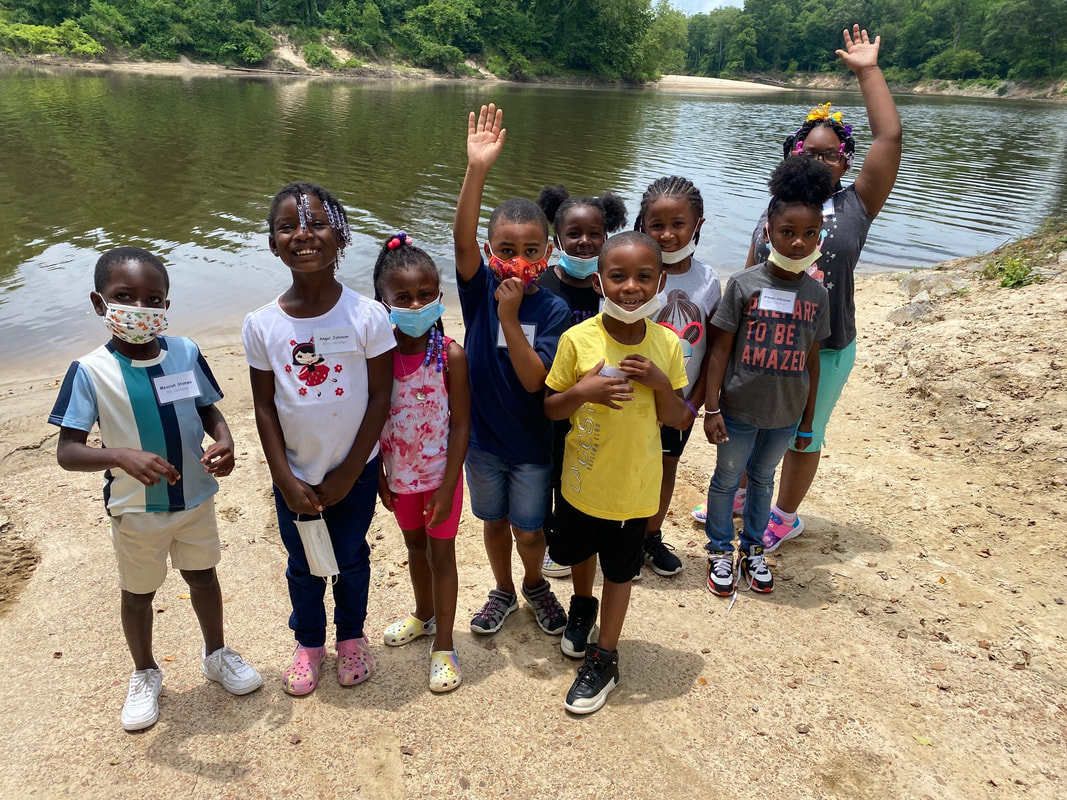
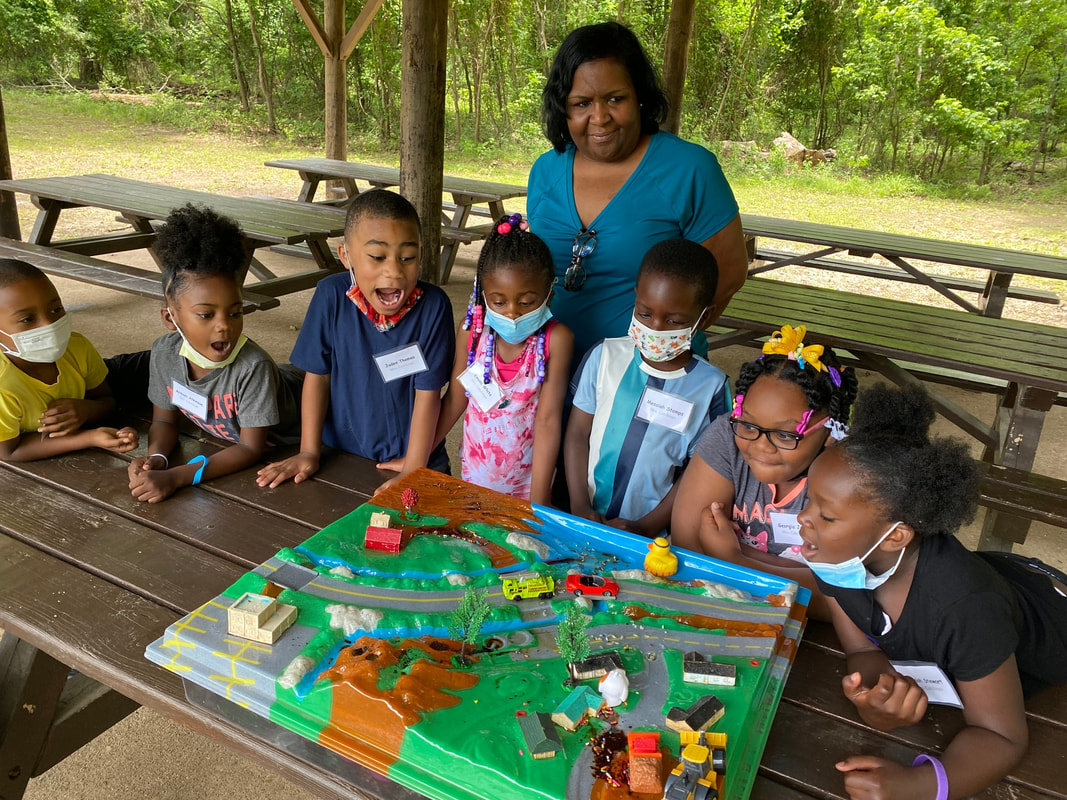
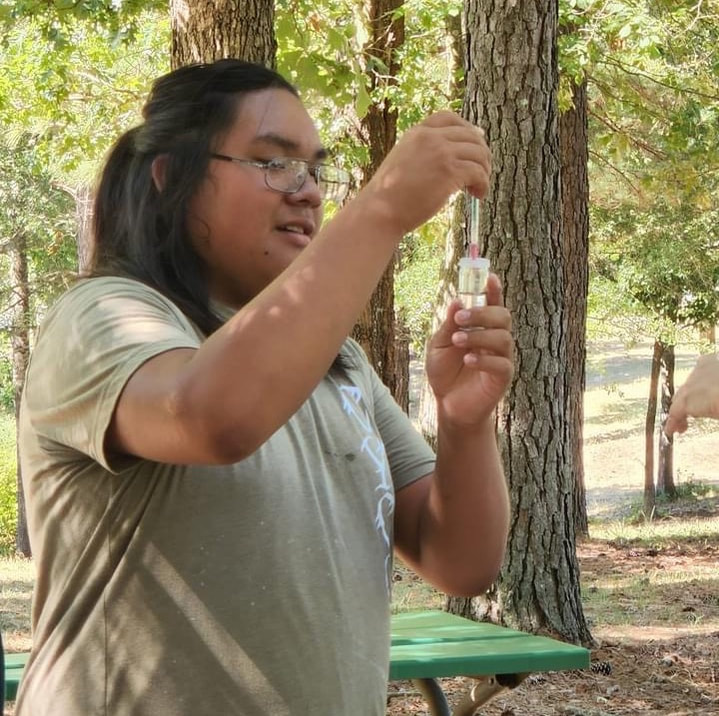

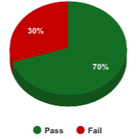
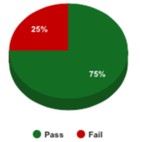
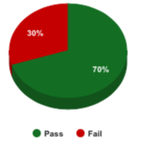
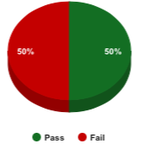


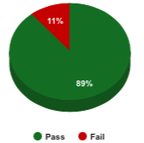
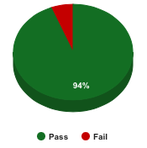
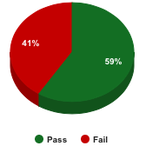
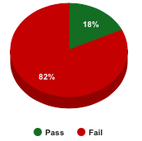


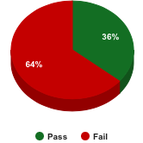
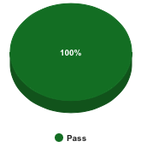
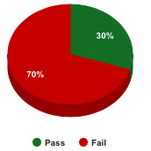
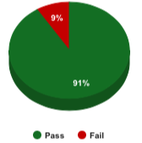


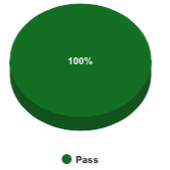
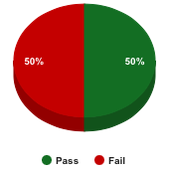
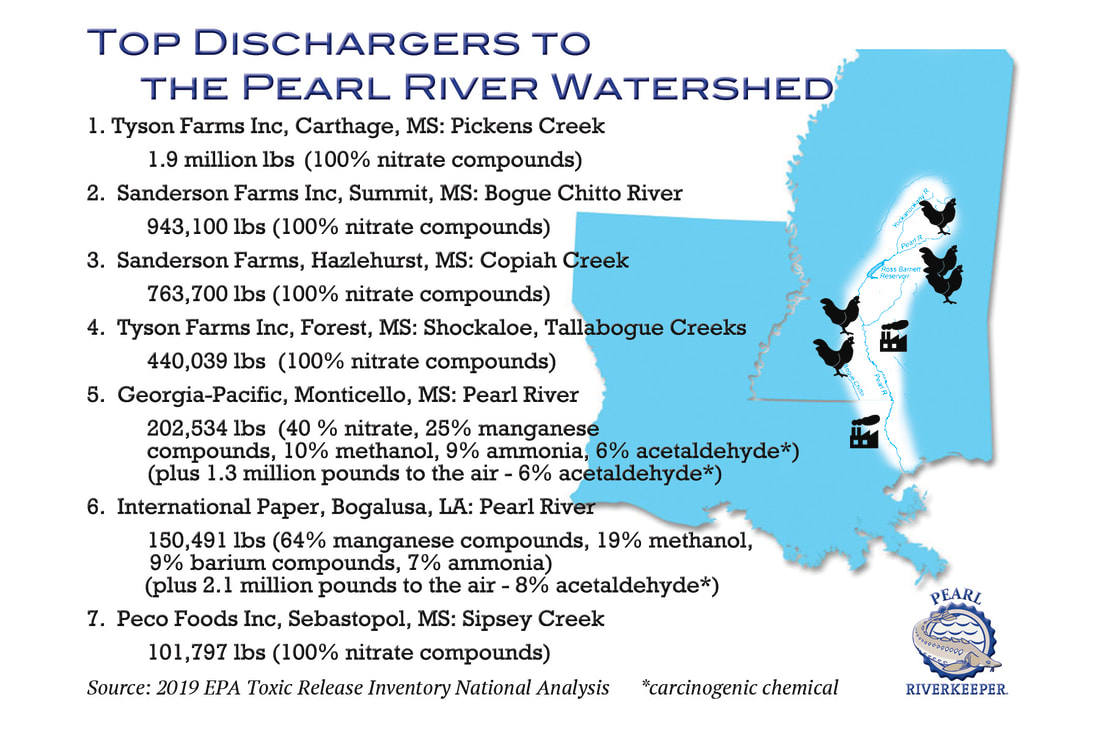

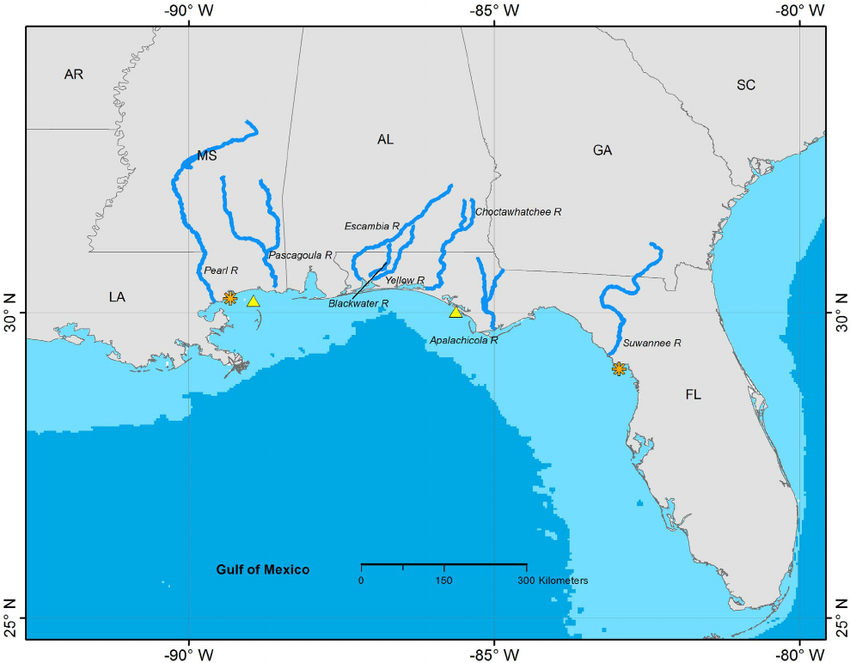
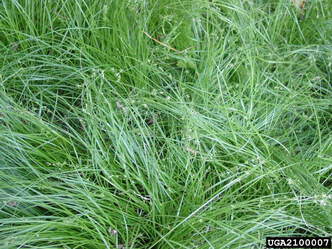
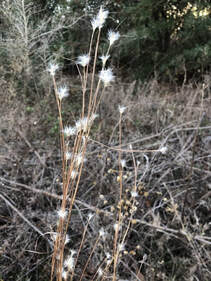
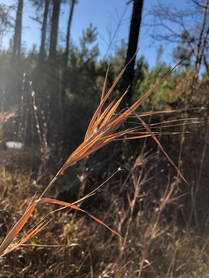
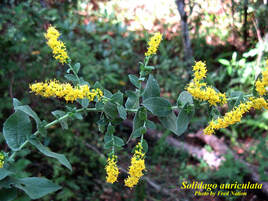
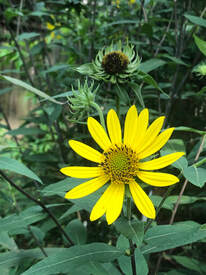
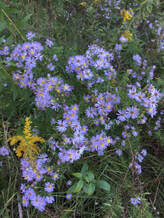
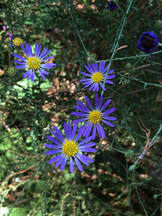
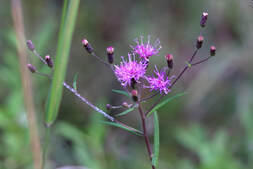
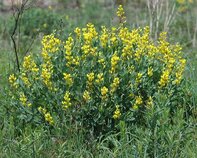
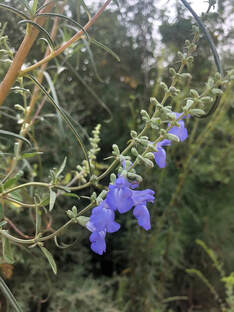
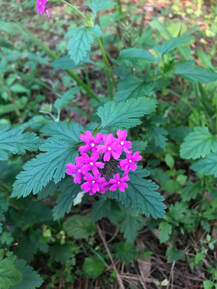
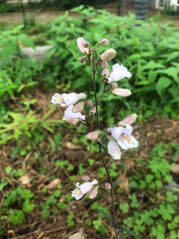
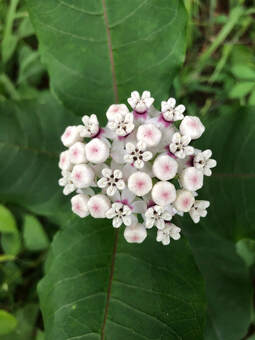
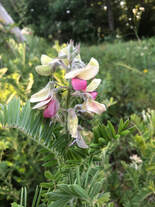
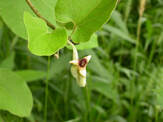
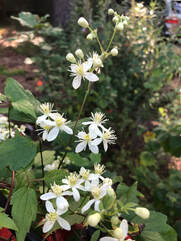
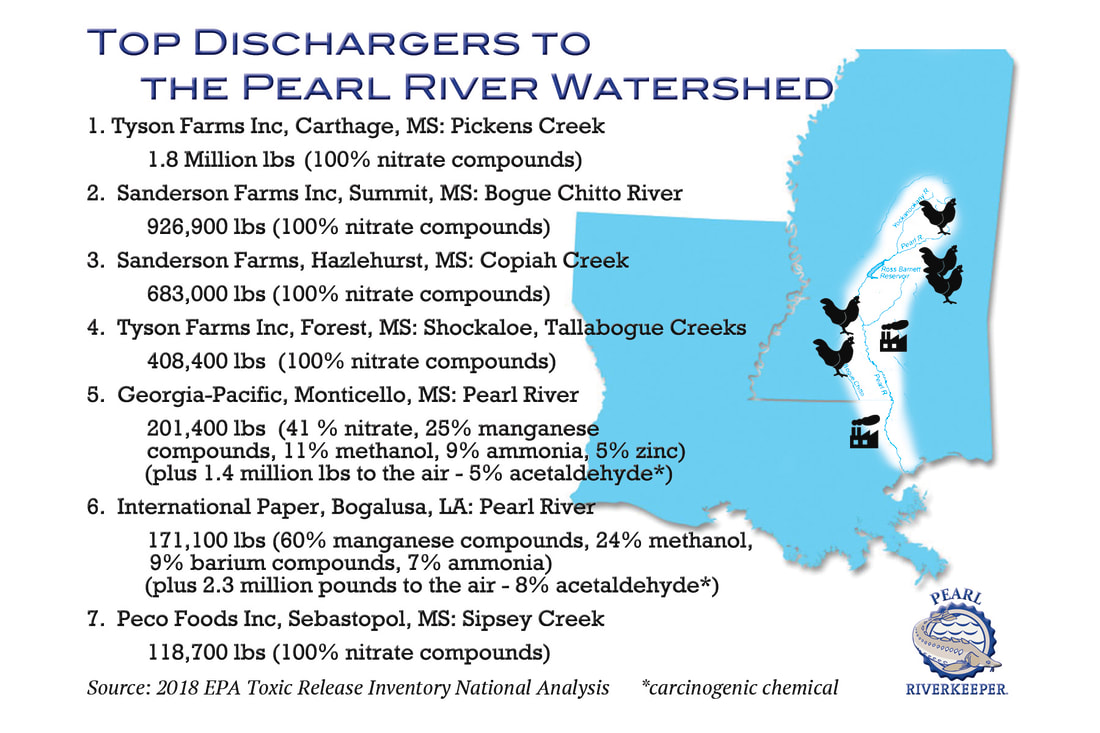
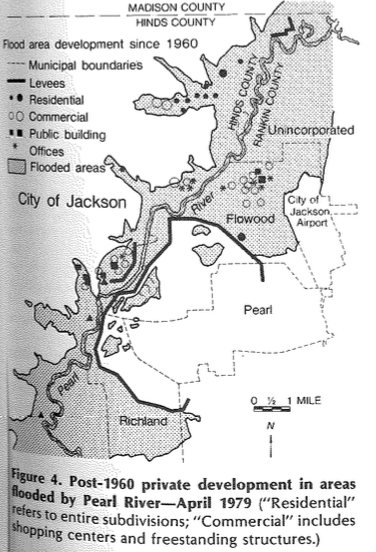
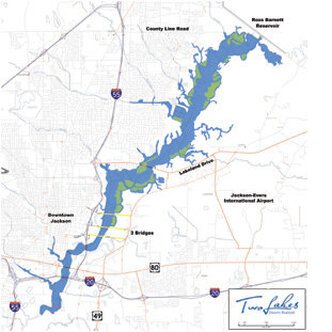

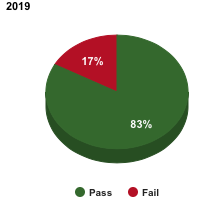
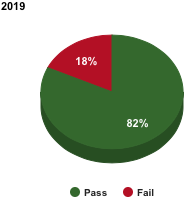
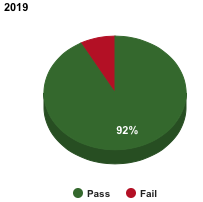
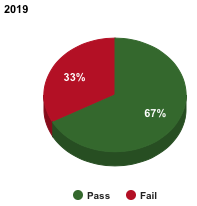
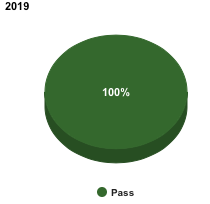
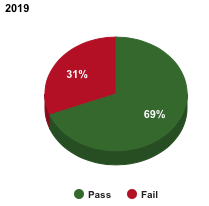
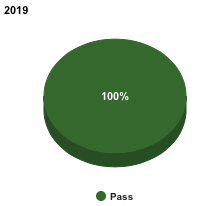
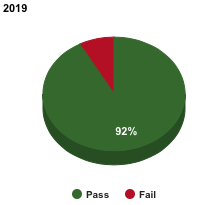
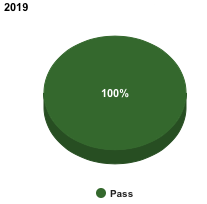
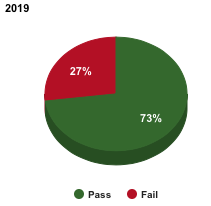
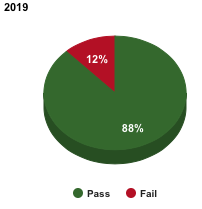
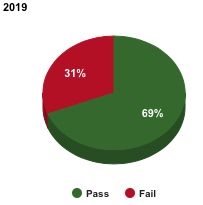

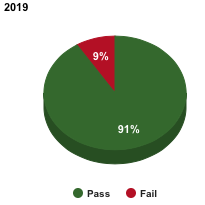
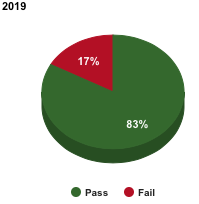
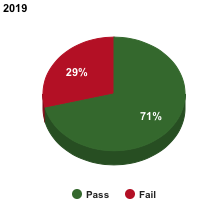
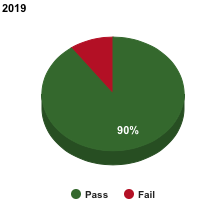
 RSS Feed
RSS Feed
